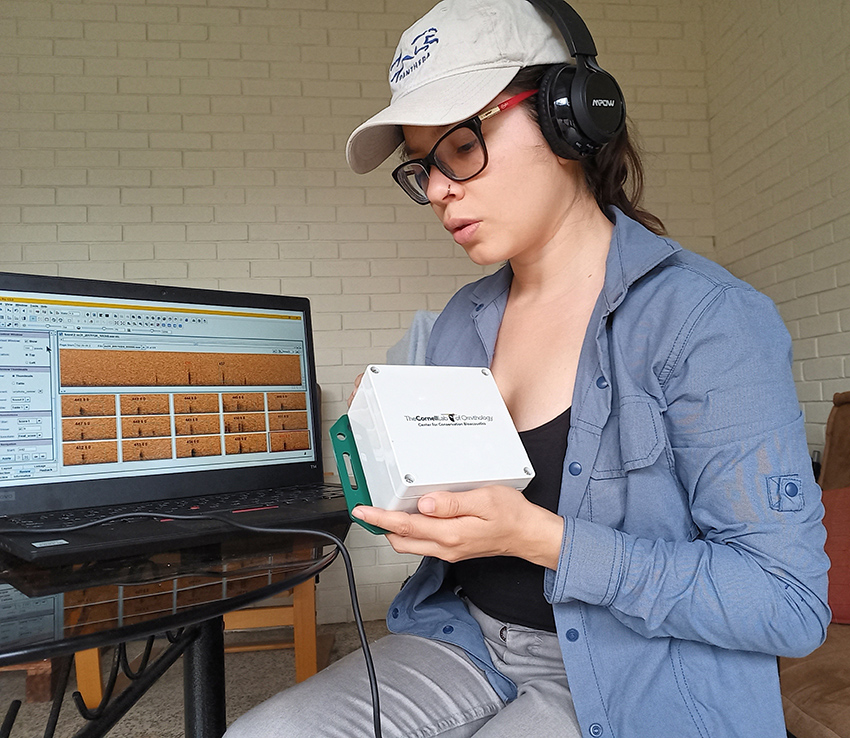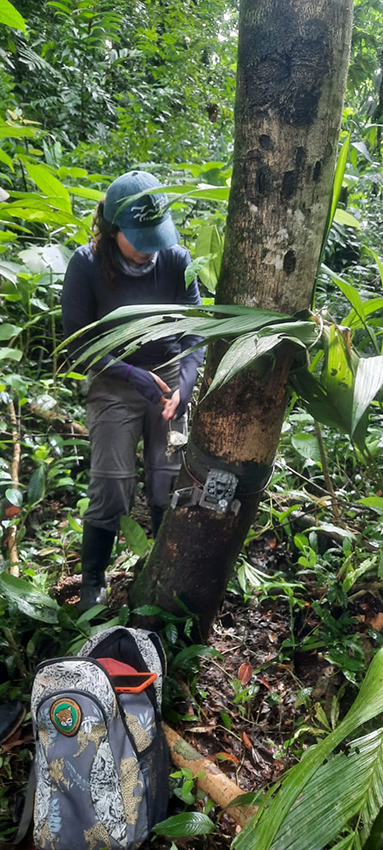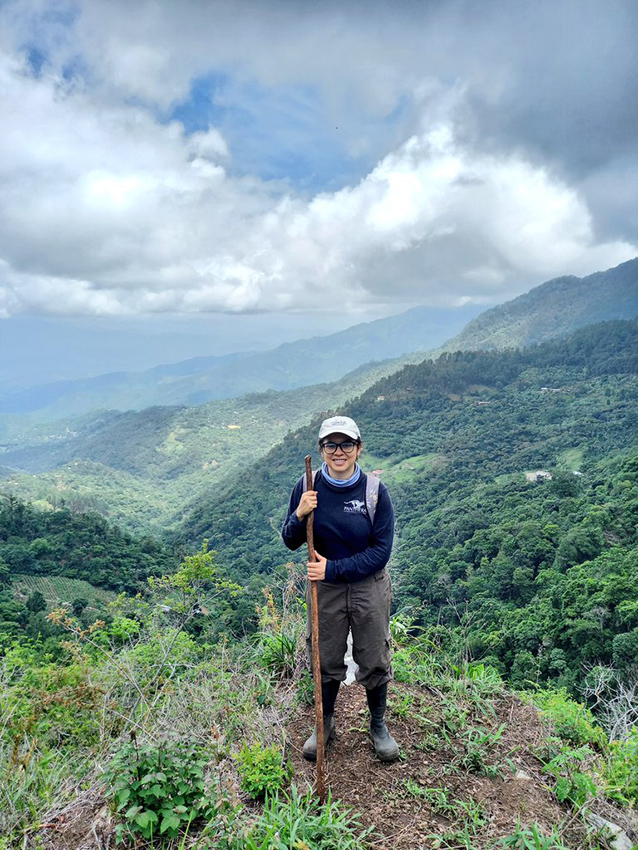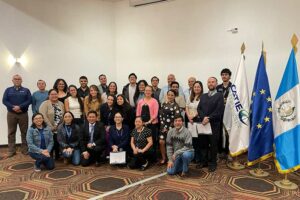Research Utilizes Technology and Community Collaboration to Mitigate Threats in Jaguar Key Areas in Central America

- This is the research of Bárbara Escobar Anleu, doctoral candidate at CATIE
January 25, 2024. In a prominent investigation led by a CATIE (Tropical Agricultural Research and Higher Education Center) doctoral candidate, efforts are underway to reduce significant threats in an area critical for species connectivity, such as jaguars in Mesoamerica, with a focus on Guatemala. The student, Bárbara Escobar Anleu, whose conservation work in Guatemala has garnered international attention from media outlets like BBC and The New York Times, shares some experiences and results from her ongoing doctoral project.

The research, initiated in 2017, concentrates on the use of passive acoustic monitoring technology combined with community patrols in the Sierra Caral Forest Reserve, a protected area in Guatemala co-managed by the National Council of Protected Areas (CONAP) and the Foundation for Ecodevelopment and Conservation (FUNDAECO), bordering Honduras. Through the implementation of this protocol, the aim is to reduce threats to biodiversity, especially poaching and deforestation.
Collaboration with local communities and institutions has been pivotal to the study's success. Community park rangers have played an essential role in implementing conservation actions, including patrols and the installation of monitoring equipment. This collaboration not only strengthens conservation measures but also provides economic benefits to community members involved in the project.
Detailed maps, generated from patrols conducted by community park rangers, have proven to be an invaluable tool in combating poaching. These maps offer a clear visualization of areas with a higher incidence of threats, facilitating the planning of specific actions and providing additional evidence for reporting illegal activities.
Escobar Anleu highlights some preliminary results from the research using the combined protocol of patrols and acoustic monitoring, indicating a reduction in poaching activity in the studied area. However, a deeper analysis of the data is expected to confirm these findings. The researcher is also working to identify variables explaining the dynamics of poaching in Sierra Caral.
CATIE's Doctoral Program
According to Escobar Anleu, choosing CATIE for her doctorate is based on the institution's 70-year trajectory and its graduate program's diversity of offerings. She emphasizes that CATIE's regional vision allows her to focus her project on Northern Central America, a region crucial for biodiversity but threatened. Her research aims to contribute to scientific knowledge and decision-making for conservation in the region.
"I started my doctorate in July 2021, but many of the data I'm using are from previous years. I have an exclusive chapter about patrols and acoustic monitoring, using data from 2017 to 2021. In another chapter, I aim to evaluate the genetic connectivity of pumas (Puma concolor) in three countries in the northern region of Central America (Belize, Guatemala, and Honduras), working with samples from 2003 to 2023. In another chapter of my project, I use camera trap data from 2014 to understand the factors determining the presence of medium and large mammals in different protected areas in Izabal, Guatemala," detailed the student.
This research not only emphasizes the importance of technology and community collaboration in conservation but also underscores the crucial role played by CATIE's doctoral students in protecting biodiversity in Central America.

Written by:
Karla Salazar Leiva
Communications Officer
Communications and Marketing Office
CATIE
karla.salazar@catie.ac.cr



